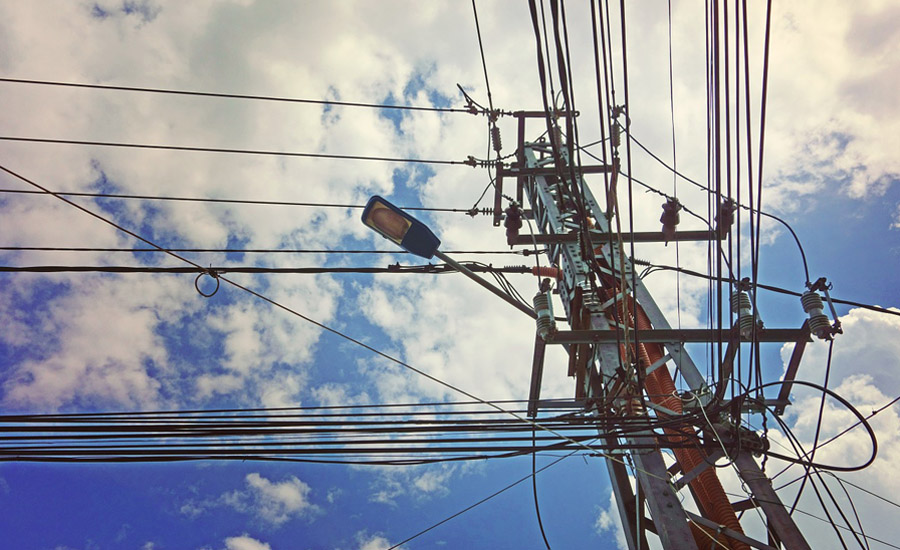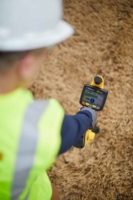6 must-have safety measures for underground utility workers

Credit: Getty Images
Underground utility construction safety is all about preparedness, site awareness, and excavation and trenching best practices. You can take several steps to ensure you and your team are constantly working safely at job sites. What must-have safety measures should you be using in underground utility construction?
1. Follow excavation standards
One of the best ways to ensure utility construction safety is following excavation standards. Official standards designed by organizations like OSHA and the U.S. Department of Labor are required in the workplace for a reason — they work. You can use these standards as a roadmap to ensure minimum safety measures are in place.
For example, OSHA standard 1926.651 outlines all the requirements for the excavation process. This standard includes the basic step-by-step process for a safe excavation as well as some best practices. You can always contact OSHA for more information or guidance on a specific standard.
One helpful feature in OSHA standards is the soil classification index — an appendix of the 1926 set of standards. Soil classification is vital for understanding your job site and preparing for any geological risks that might be present. Additionally, the type of soil you’re working with can impact the ground-penetrating detection techniques you need to use to locate any existing buried infrastructure accurately.
2. Always verify the estimated location
Tracking down the estimated location of underground utilities can be frustrating and time consuming, but it’s critical for ensuring safety. If you simply start digging with an approximate location in mind, you risk accidentally breaking a pipe or powerline, causing injury or damage.
Always complete the standard process for verifying the exact location of the underground utilities your team is excavating or working on. This usually requires contacting the original installer, identifying the estimated location and confirming it using detection equipment. Try to time location verification with clear, dry weather since soil dampness can interfere with ground-penetrating radar accuracy.
When in doubt, use the standard 811 hotline to contact Call Before You Dig services. Remember to leave plenty of time to verify the dig location since getting the right personnel and equipment on-site can take a day or two.
3. Prioritize safe trenching practices
Trenches are necessary for underground utility work, but they can be a serious hazard without the proper precautions. Observing the necessary trenching best practices is essential for ensuring underground utility construction safety.
For example, shielding and shaving are vital to verifying trenches are stable enough for your team to work in. Shaving may still be necessary even if you have shielding equipment like trench boxes in place. Take concerns about soil stability seriously, even if you must install more supports.
Make sure your team is highly aware of their surroundings at all times, as well. Seemingly simple oversights can lead to severe accidents, such as entering a wet trench or moving a suspended load over a canal with workers inside. Remind workers to keep all their equipment at least two feet away from the edge of the trench to prevent items from accidentally falling in.
4. Ensure safety equipment is easily available
Every industry pro knows the importance of safety equipment. However, you may have team members who aren’t experienced yet or cannot afford good safety gear. Likewise, an experienced employee could easily have an accident that leads to a piece of their gear breaking.
It’s always a good idea to keep some safety equipment on hand in case anyone needs it in situations like this. Make sure your team knows you have safety equipment available, as well. This will reduce a worker's anxiety about asking to borrow a hard hat or gloves.
Readily available safety gear also makes it more difficult for workers to pass off PPE non-compliance. Remind your team that failing to wear all of their protective equipment can be life threatening. For example, studies show 70% of falling accidents involved a worker lacking PPE.
Encourage your team to invest in their own safety equipment. However, it’s always best to have backup gear available so you can always put safety first.
5. Pay attention to weather
Weather is one of the most important factors in underground utility construction safety before and during on-site operations. Rain, snow, sleet, frost and high humidity all impact site safety and soil conditions. You need to pay close attention to weather patterns to make sure everyone can work safely.
For example, if you conduct trench shoring while the soil is frozen, the holes may become unstable and cave in when the ground thaws. On the other hand, if you dig, shield and shave a trench while the dirt is excessively dry, you may need more moisture to maintain stability.
Sudden changes in weather pose a particular hazard. For instance, heavy rain overnight can completely flood a trench or make the soil too damp to dig safely. If wet weather transitions to freezing temperatures, you can end up with icy canals. Both scenarios are too hazardous to approve on-site operations for the day.
Delays may be frustrating, but project leaders must pay attention to weather conditions. It’s not worth risking your team’s safety to try working through a bit of rain.
6. Use technology to monitor safety
There’s been a lot of innovation in the underground utilities and construction industry in recent years. One of the exciting developments to come out of that innovation is IoT safety monitoring equipment. IoT devices can be extremely helpful, particularly at large job sites where visual monitoring is challenging.
There are a wide variety of IoT tools available that you can use to automate safety monitoring. For example, the mining industry is using IoT air quality sensors to detect hazardous fumes and pollutants in tunnels. Similarly, you can use IoT sensors to monitor soil conditions so you can remotely check your job site before calling in workers for the day.
Ensuring underground utility construction safety
Underground utility construction safety is all about awareness, preparation and wise decision making. Implementing the safety measures outlined here can help you ensure your team is always safe on the job. Top priorities in underground utility safety include trench stability, weather, soil conditions, PPE, effective safety monitoring and accurate location estimating.
Looking for a reprint of this article?
From high-res PDFs to custom plaques, order your copy today!








